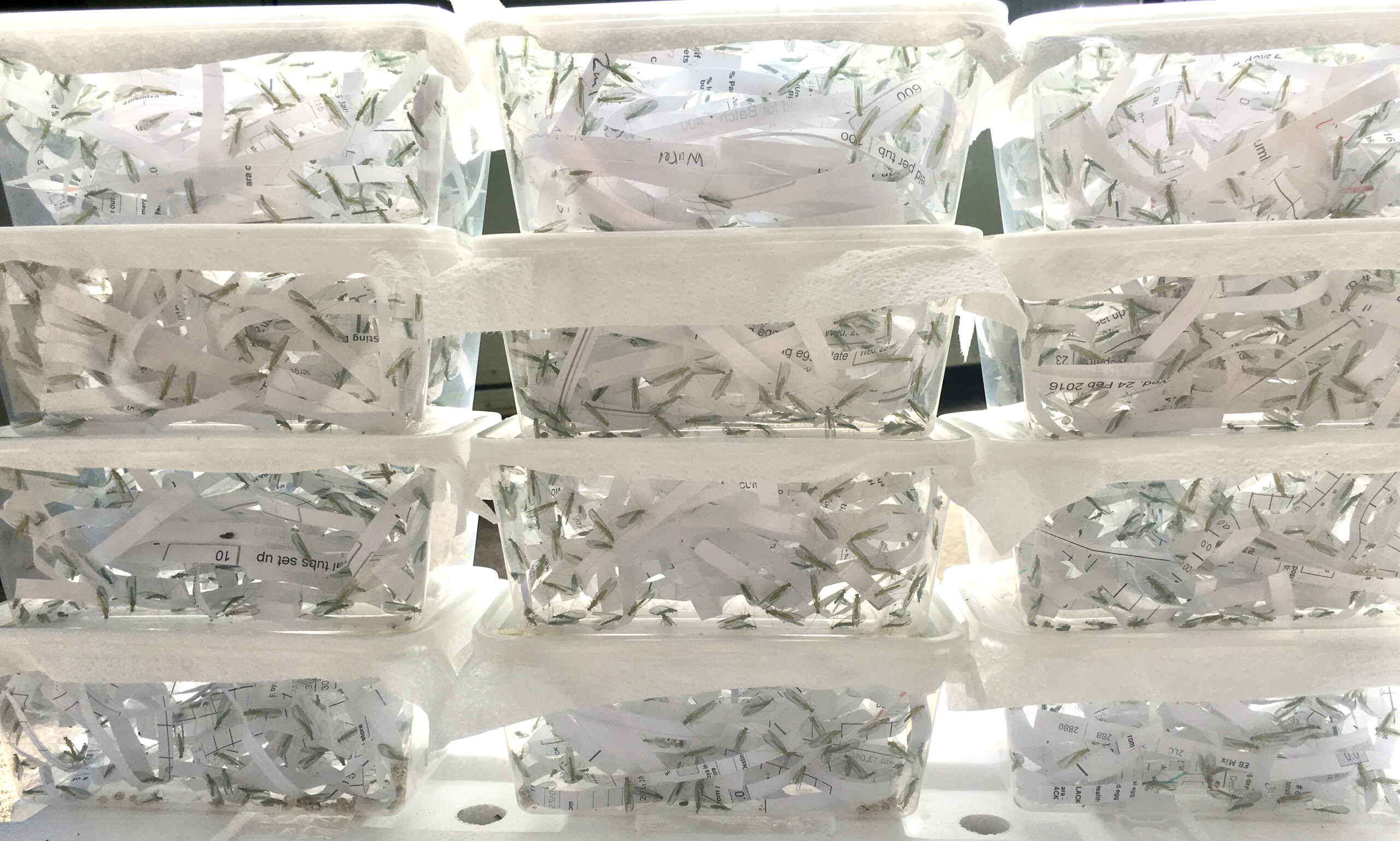Description
Green lacewings are generalist predators, commonly found throughout the natural world. As adults they are beautiful to look at, bright green with long, lace-like wings and long antennae. Eggs are laid in groups, each at the tip of a long stalk to help it avoid being eaten. The larvae look completely different to the adults, they are small and brown with large hollow jaws which they use to grasp their prey. The larvae have a habit of carrying the remains of their prey on their backs.
Green lacewings make excellent biological control agents in any crop environment or backyard because they are highly polyphagous, long lived and persist in cool temperatures, thereby lowering pest populations whilst they overwinter. Green lacewing females lay several hundred eggs during her lifetime and choose egg-laying sites where there are sources of prey for her larvae.
CROPS SUITABLE FOR RELEASE
Crops Suitable for Release
Green lacewings are an excellent generalist predator within orchards, nurseries and home gardens. They attack a wide range of insects, including lace bug, thrips, aphids, scale, mites, mealybugs, moth eggs and caterpillars.
RELEASE RATES AND STRATEGIES
Release Rates and Strategies
Ecosystems rely on generalist predators such as green lacewings to keep the ‘secondary pests’, like thrips, mites, aphid, scale or mealybugs under control. Any large-scale disruption in the ecosystem, such as chemical application, often kills most of the natural enemies of these secondary pests, such as green lacewings. The secondary pests recolonise more rapidly than their predators, which can lead to secondary pest problems that otherwise wouldn’t have occurred.
Growers can mitigate this cycle of secondary pest outbreaks by creating an environment that provides habitat and food for generalist predators within their orchard/garden (see our section on inter-row insectaries), and also by releasing green lacewings in stages after any large-scale spray application.
Strategies for macadamia lace bug
Within the Australian macadamia industry, lace bug are a particularly important and difficult pest at present. They are the first pest to emerge in the season and their control with chemicals often wipes out the entire suite of generalist predators in the orchard, leaving very few generalist predators to keep the secondary pests in check.
Releasing green lacewings throughout autumn and winter will help keep lace bug numbers down and result in a slower build-up of lace bug in spring, providing more time for nuts to set and so delay the demand to spray. Good inter-row growth and plant diversity will provide habitat and food for the green lacewings and will help maintain good populations of generalist predators in your orchard.
Release rates
Lacewing adults are sold in packs of 200+ (more than half females) and in a program.
We choose to send out green lacewings as adults because they will have fed, mated and be ready to distribute their eggs up into the trees where the pests are.
CHEMICAL USE and LACEWINGS
Chemical Use and Green Lacewings
Use of broad spectrum insecticides in orchards kills lacewings as well as all other arthropod natural enemies. Unfortunately there are few pesticides that are not harmful for lacewings, most are toxic or have sublethal effects. Check the side effects of pesticides if they are required, and select products that are of least harm to lacewings and other key beneficial insects in your orchard.
ORDERING & DELIVERY
Ordering and Delivery
Ongoing programs of lacewing releases should be ordered several months in advance so we can get our colony to the necessary capacity in time. They are sold in packs of 200+ lacewing adults per delivery. Please contact us for pricing information[AG1] .
Green lacewings are usually despatched on a Tuesday via Australia Post Express Post, to arrive on Wednesday or Thursday. Upon despatch, we send an email notification and tracking number for your parcel. They are delivered as live adults that have been fed (honey will be in the container) and mated so are ready to release.
Once received, please ensure the closed containers are not exposed to high temperatures or direct sunlight.
STALLING EMERGENCE
Stalling Lacewing Emergence
Lacewing adults should be released as soon as possible after they are received. If, however, they need to be stalled to avoid chemical release, or for any other reason, they can be kept for a few days in a cool, dark environment, such as an esky with a couple of ice bricks with some padding over the top.
HOW AND WHERE TO RELEASE
How and Where to Release
Upon release, adult green lacewings are likely to move downwind and are attracted to food sources like honey dew from insects, nectar and pollen. In an orchard, release the adult lacewings at numerous locations a couple of rows in from the windward side of the orchard, or depending how large the orchard is, in stages through the orchard.
If there are eggs on the shredded paper these can be hung in trees. These will hatch and find prey to feed on within the tree.
AFTER RELEASE & MONITORING
After Release and Monitoring
Lacewing adults disperse rapidly and the females quickly begin laying eggs. When monitoring for green lacewing establishment, look for eggs (distinctive eggs on long stalks) both within the trees and inter-row, or larvae which carry pest corpses and other debris on their backs.
CULTURAL PRACTICES TO AID ESTABLISHMENT
Cultural Practices to Aid Establishment
Providing inter-row insectaries within and around the orchard is a good way to provide sources of food and shelter for adult lacewings, and will also provide a refuge during the event of chemical spraying within the trees.
Ants often protect several of the pests that you may be trying to reduce in number, for example aphids, mealybugs and scale. By controlling ant populations (using sticky bands on trees is a good one) you will give the generalist predators a better chance of keeping the ‘secondary pests’ under control.








